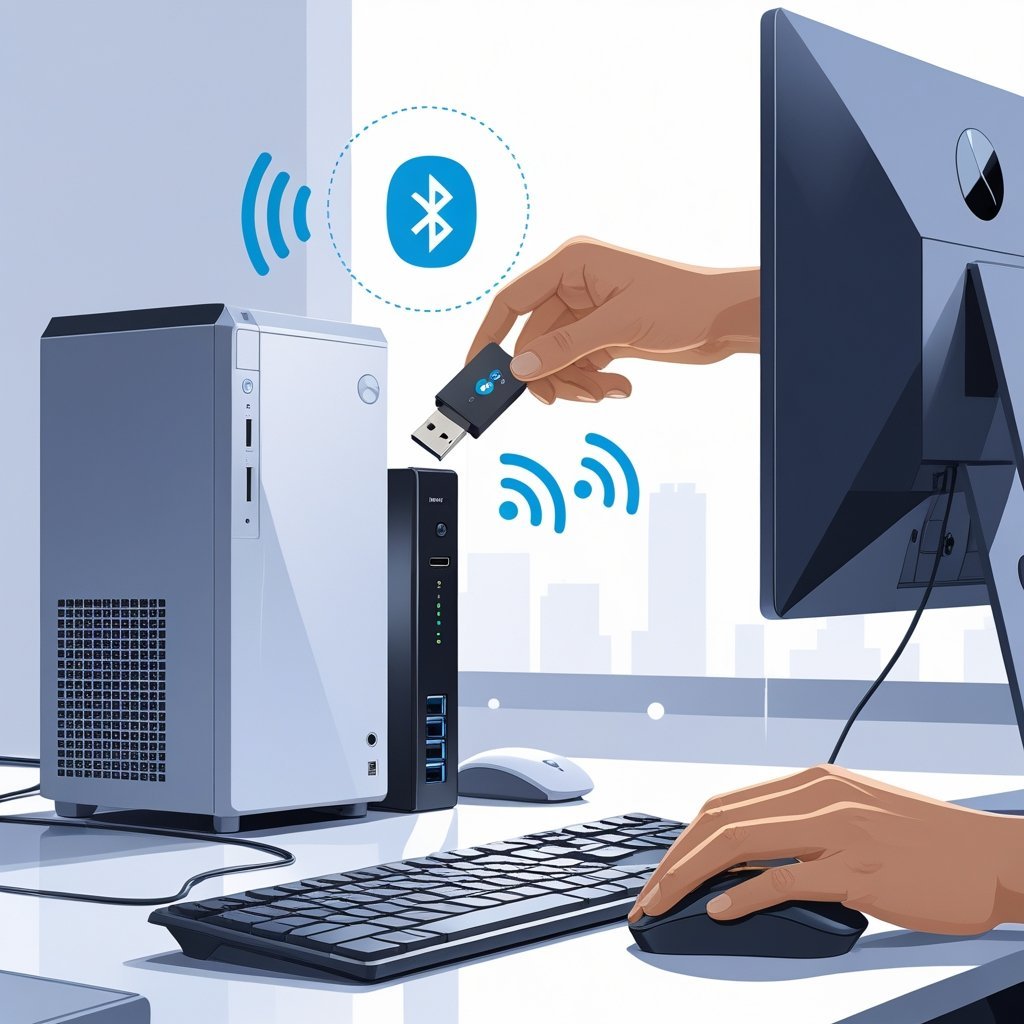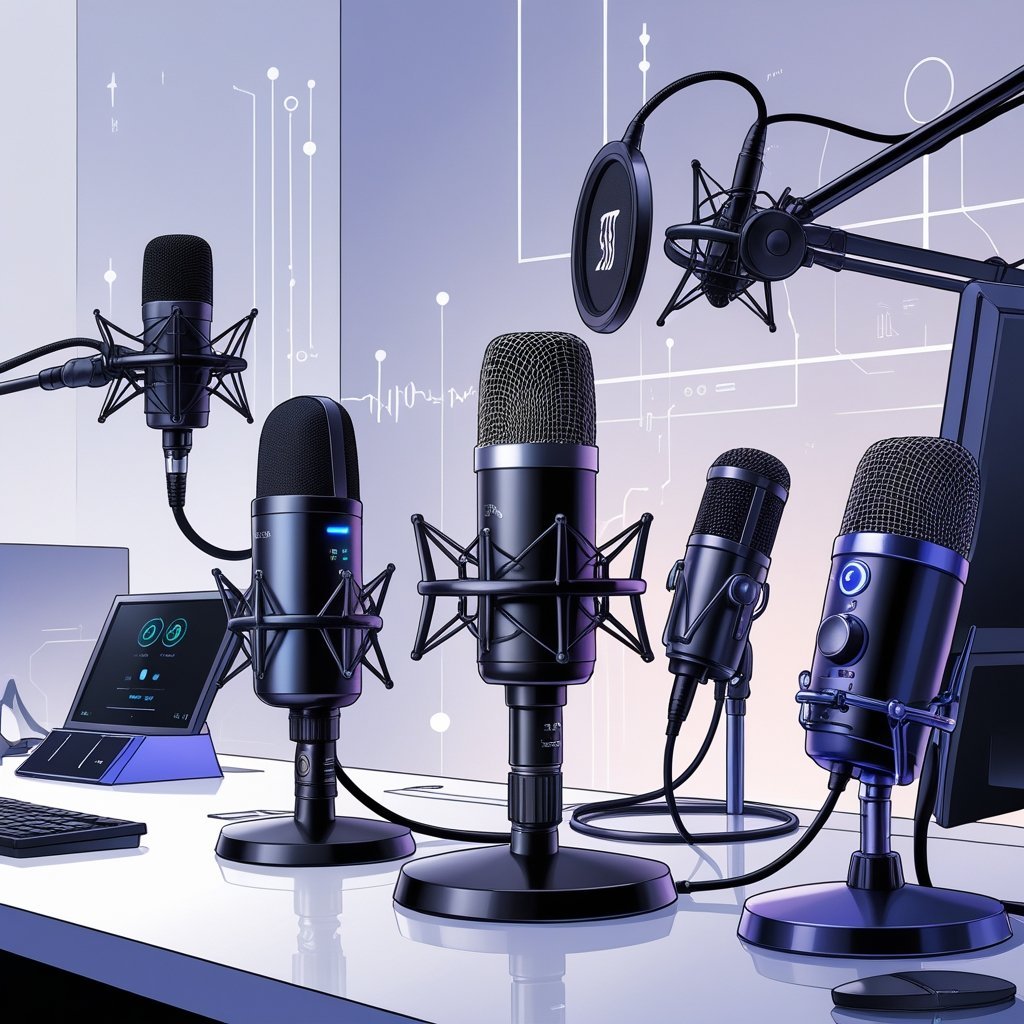3 Quick Steps To Add Bluetooth Or WiFi To A Desktop
Upgrading your desktop with Bluetooth or WiFi is easier than you might think, and it opens up many new ways to connect devices or access the internet wirelessly. You can add Bluetooth or WiFi to a desktop by installing a simple USB adapter or an internal PCIe card. This means you do not need to buy a new computer just to enjoy wireless connections.
Related Posts:
If you have never worked inside a PC before, easy-to-use external adapters make the process quick and simple. For more options about adding wireless features, you can check out these step-by-step instructions or see a simple video guide.
Key Takeaways:
- You can add Bluetooth or WiFi to a desktop, almost all of them
- Both USB and internal card options are available for upgrades.
- Common setup problems can be fixed with basic troubleshooting.
Understanding Bluetooth and WiFi Integration in Desktops
A desktop without built-in Bluetooth or WiFi can limit your choices for connecting devices and accessing the internet. You can improve your desktop by adding Bluetooth and WiFi adapters, which are simple to install and make everyday tasks easier.
Benefits of Wireless Connectivity
Adding Bluetooth and WiFi to a desktop lets you connect wireless accessories and access the internet without cables. Bluetooth is handy for linking devices like headphones, speakers, keyboards, and mice. WiFi allows for faster downloads, web browsing, and online gaming even if your desktop is far from your router.
With Bluetooth and WiFi, you can keep your workspace tidy by reducing cords. These features give you more freedom to move your computer or connect devices wherever you need. Bluetooth also works well for sharing files quickly between devices nearby.
Many modern accessories, such as wireless printers and smartphones, require Bluetooth or WiFi. Having both means you can easily add or swap gadgets without buying extra adapters or using multiple cables.
Internal vs. External Adapters
You can add Bluetooth or WiFi to a desktop using two main types of adapters: internal PCIe cards and external USB dongles. Internal adapters fit inside your desktop case and usually offer a stronger and more stable connection because they have bigger antennas and use the motherboard’s connections.
External USB adapters are easy to install and work with most desktops because you just plug them into a USB port. They’re a good choice if you do not want to open your PC case or if your case does not have free internal slots. However, they may not have the same range or speed as internal cards.
Adding Bluetooth and WiFi to a desktop lets you connect wireless accessories and access the internet without cables. Bluetooth is handy for linking devices like headphones, speakers, keyboards, and mice. WiFi allows for faster downloads, web browsing, and online gaming even if your desktop is far from your router.
With Bluetooth and WiFi, you can keep your workspace tidy by reducing cords. These features give you more freedom to move your computer or connect devices wherever you need. Bluetooth also works well for sharing files quickly between devices nearby.
Many modern accessories, such as wireless printers and smartphones, require Bluetooth or WiFi. Having both means you can easily add or swap gadgets without buying extra adapters or using multiple cables.
You can add Bluetooth or WiFi to a desktop using two main types of adapters: internal PCIe cards and external USB dongles. Internal adapters fit inside your desktop case and usually offer a stronger and more stable connection because they have bigger antennas and use the motherboard’s connections.
External USB adapters are easy to install and work with most desktops because you just plug them into a USB port. They’re a good choice if you do not want to open your PC case or if your case does not have free internal slots. However, they may not have the same range or speed as internal cards.
Best Bluetooth/Wifi Pens for PC
Bluetooth Pens
TP-Link Bluetooth 5.0 Adapter UB500
The Bluetooth 5.0 UB500 Stick adds Bluetooth functionality to Windows PCs, enabling connection with devices like headphones, speakers, keyboards, and more. It offers faster speeds, longer range (up to 20m), and low audio latency with aptX Low Latency support. The compact design fits easily into USB ports, and it’s compatible with Windows 11/10/8.1/7, supporting older Bluetooth versions as well.
UGREEN Bluetooth 5.4 Dongle USB
The Bluetooth 5.4 USB Adapter offers fast, stable, low-latency connections with support for up to 5 devices at once. It’s plug-and-play on Windows 11/10/8.1, requires a driver for Windows 7, and isn’t compatible with macOS or Linux. Features include low energy use, enhanced data rate, an LED indicator, and a compact, portable design. Not compatible with PS5/PS4/Xbox.
Wifi Pens
Bingfu Dual Band WiFi
Dual-Band WiFi Antennas (2-pack) with 3dBi gain and RP-SMA male connectors, supporting 2.4GHz and 5GHz (5.8GHz) frequencies. Compatible with a wide range of devices, including routers, USB adapters, IP cameras, DVRs, industrial IoT devices, backup cameras, FPV drones, and HDMI extenders. Ideal for boosting wireless signal in various applications.
External WiFi 6 6E Tri-Band Antenna
Tri-Band 9dBi WiFi Antenna supports 2.4GHz, 5.8GHz, and 6GHz (WiFi 6/6E) with RP-SMA male connectors and dual 6.5ft cables. It’s omni-directional, easy to install, and ideal for routers, gaming motherboards (ASUS ROG, GIGABYTE), PCIe WiFi/BT cards, and access points. Designed for better coverage when placed high and away from obstructions. Features a 180° rotatable base and responsive customer support.
Bluetooth/Wifi Pens
USB WiFi Bluetooth Adapter, 600Mbps Dual Band 2.4/5Ghz
2-in-1 USB WiFi & Bluetooth Adapter with built-in driver for easy setup—just plug and play on most Windows versions. Supports dual-band WiFi (2.4GHz 150Mbps / 5.8GHz 433Mbps) via RTL8821CU chip, ideal for HD streaming and gaming. Bluetooth 4.2 enables wireless connection to multiple devices (Windows 7–11 only). Features dual antennas for stronger signal and supports AP mode to turn a PC into a WiFi hotspot. Compatible with Windows XP/7/8/8.1/10/11 and macOS 10.11–10.15 (WiFi only).

Adding Bluetooth or WiFi to a Desktop: Step-By-Step
Let’s learn how to add a Bluetooth or wifi to a desktop, it’s really simple and does not require much technical skill. You only need the right adapter, a few quick hardware steps, and some basic software setup.
Installing Bluetooth Hardware
Once you have your Bluetooth adapter, installation is usually fast.
USB Bluetooth Adapter:
- Shut down your computer.
- Plug the adapter into an open USB port.
- Start your computer.
PCIe Bluetooth Card:
- Turn off your computer and unplug it.
- Open your PC case.
- Find an empty PCIe slot on your motherboard.
- Remove the slot cover and insert the card firmly.
- Some cards require a USB header connection for Bluetooth. Connect the cable as directed.
- Close the case and reconnect power.
Newer desktops often have plug-and-play support for these adapters. In most cases, installation takes just a few minutes. Make sure your desktop has the needed ports or slots for the adapter you choose. Organize cables to avoid blockages and ensure airflow.
To see a visual guide, check out this step-by-step Bluetooth install video.
Configuring Bluetooth Software
With the hardware installed, you need to enable and configure Bluetooth in Windows.
- Click the Start menu and open “Settings.”
- Go to “Devices” or search for “Bluetooth & other devices.”
- Make sure Bluetooth is turned on. A toggle should now be visible.
If you do not see Bluetooth options, install the drivers that came with your adapter or card. You can also download updated drivers from the manufacturer’s website. Some adapters will start working as soon as you plug them in, while others need drivers to be installed first.
After Bluetooth is enabled, you can pair new devices. Make the device you want to connect discoverable. In Bluetooth settings, click “Add Bluetooth or other device” and follow the prompts. For more help, visit the Microsoft guide to pairing a Bluetooth device in Windows.
If you run into issues, run the Windows Bluetooth troubleshooter or check Device Manager for any warning signs under “Bluetooth.”
Common Problems and Solutions
When adding Bluetooth or wifi to a desktop if your wireless adapter is not working, start by checking if the device is enabled in Device Manager. Open Device Manager, find your network or Bluetooth adapter in the list, and make sure it is not disabled. Sometimes simply enabling the hardware solves the problem.
If Bluetooth or WiFi is missing, try manually adding the device in Windows settings. Go to Start, select Settings > Bluetooth & devices, and try to add the device again. For WiFi, verify the adapter is detected under Network & Internet.
Unstable connections or frequent dropouts can be due to outdated drivers. Update your drivers by right-clicking your adapter in Device Manager and selecting Update driver. Outdated software often causes the most common problems.
If you still have issues getting online, try removing the problematic network from your saved list and reconnecting. Go to Settings > Network & Internet > WiFi > Manage Known Networks, remove your troublesome network, and then restart your computer before reconnecting. For more help, visit Microsoft’s guide on fixing Bluetooth problems in Windows.
Optimizing Connection Performance
Strong signal and driver updates are key for fast Bluetooth or WiFi to a desktop PCs. For best WiFi speed, place your desktop close to your router or use a high-gain antenna if possible. USB or PCIe WiFi adapters can improve signal and reliability.
Keep your adapters’ drivers up to date. Manufacturers regularly release updates to fix bugs and boost performance. Updating can often solve hidden issues.
Other wireless devices, microwaves, or thick walls can block signals. Try moving your router or your PC to a better spot. If you want the most reliable connection, a PCIe WiFi card is recommended over many USB adapters.
For Bluetooth, make sure there are not too many paired devices at once. Unpair anything you do not use. This can stop interference and speed up connections. Small changes like these help make your desktop’s wireless performance much stronger.

